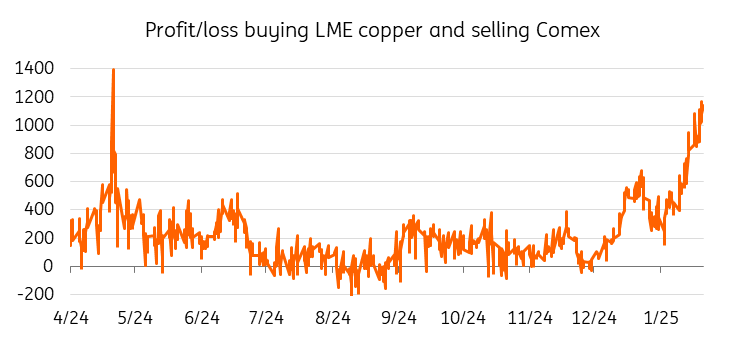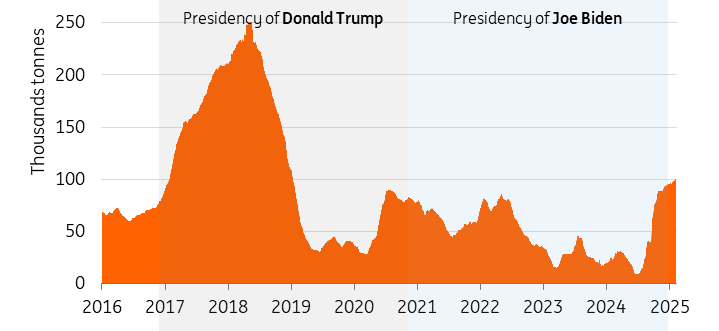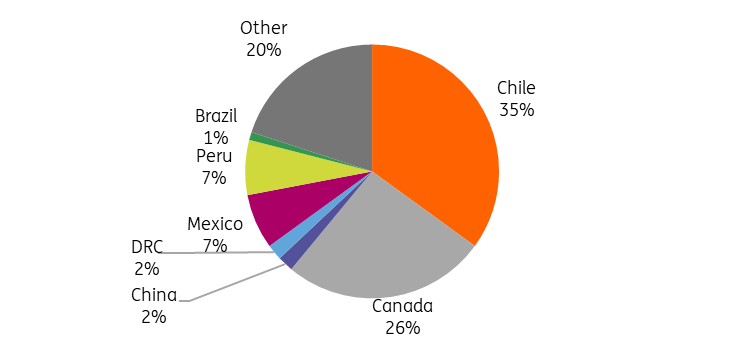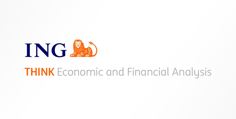U.S. approves sale of 70,000 AI chips to UAE and Saudi Arabia, WSJ reports
The threat of tariffs on copper imports to the US has driven the difference between the CME copper contract price and the LME to record highs
A Tariff Bost
The markets are already pricing in tariffs on copper shipments to the US, despite President Trump saying it will take a little longer to implement than those on aluminium and steel announced earlier in the week.
Copper in New York Shoots Above London

Source: LME, CME, ING Research
The arbitrage between the CME and the LME contracts has widened, with the CME premium now standing at over $1,200/t - more than 10% of the LME price. Prices in the US are up more than 20% this year, having hit their highest level since 2024, while the benchmark LME price is around 10% higher year-to-date. There is a further upside risk for copper prices in New York if tariffs are applied; however, the spread risks a pullback if any potential tariffs fall short of expectations.
US Copper Rush
The threat of tariffs has led to expectations of a temporary tightness in the US copper market, with traders shifting metal from the global LME warehouses to the US to take advantage of the arbitrage. We have seen this before - under Trump’s first term, CME stocks surged, driven by tariff uncertainty, which was then followed by a destocking cycle. CME copper stocks have been steadily rising since Trump's US presidential election win and are now over 100,000 tonnes.
CME Copper Stocks Surge Amid Tariff Threats

Source: CME, ING Research
The US is reliant on around 45% of copper imports for its domestic consumption (according to data from the US Geological Survey). Chile is the country's biggest supplier at 35%, followed by Canada at 26%. The US imported around 800,000 tonnes of refined copper in 2024, while its domestic production last year totaled 850,000 tonnes.
US Copper Imports by Country

Source: US Census Bureau, ING Research
Doctor Copper
If implemented, US tariffs on copper might drive an initial, short-term price surge, reflecting front loading of inventories ahead of any tariffs coming into effect; a global trade war would be bearish for copper prices. Copper, often referred to as "Doctor Copper", holds a reputation as a barometer for global economic health. Tariffs are bearish for copper and other industrial metals in the context of slowing global growth and keeping inflation higher for longer.
If US inflation remains persistent or rebounds, it could prompt the Federal Reserve to delay or increase interest rate cuts. This would further hinder the recovery in the building and construction sectors and be bearish for copper demand. With growth in the US likely to slow on the back of tariffs and China already struggling to revive its economy, demand for copper and other industrial metals is likely to weaken. On the other hand, the prospect of a prolonged trade war has raised expectations for Beijing to unveil more aggressive stimulus measures, which would cap the downside to copper and other industrial metals prices.
Disclaimer: This publication has been prepared by ING solely for information purposes irrespective of a particular user's means, financial situation or investment objectives. The information does not constitute investment recommendation, and nor is it investment, legal or tax advice or an offer or solicitation to purchase or sell any financial instrument. Read more
